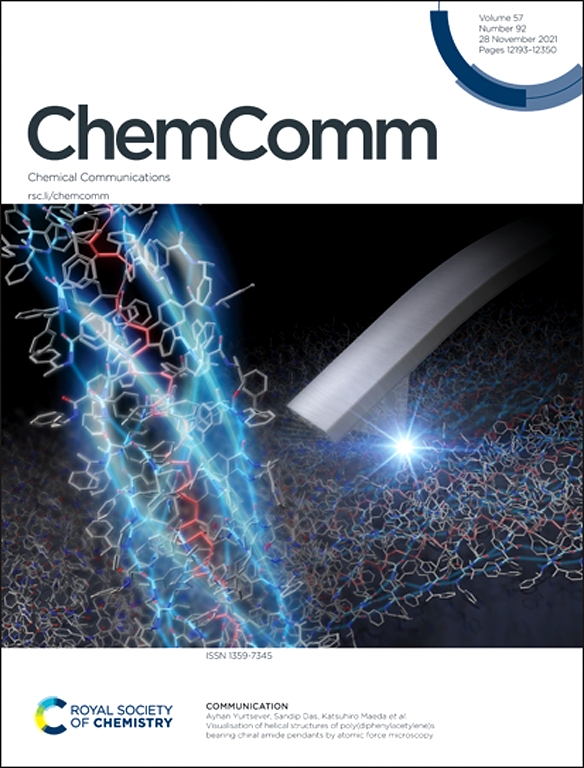金属-有机骨架的界面效应促进电催化反应。
IF 4.2
2区 化学
Q2 CHEMISTRY, MULTIDISCIPLINARY
引用次数: 0
摘要
金属有机骨架(MOF)材料以其高比表面积、可调节的孔结构和丰富的活性位点在电催化领域显示出巨大的潜力。然而,其电催化性能的进一步提高往往受到电子传递效率、活性位点的可及性和界面反应动力学等因素的限制。界面工程策略被认为是改性mof基催化剂以优化其催化性能的一种有前途的策略。近年来取得了重大进展。在此基础上,本文综述了近年来改性MOF材料的研究进展,重点介绍了改性MOF材料在优化电子传递和电导率、增加活性位点暴露、改善反应物/生成物传质和稳定界面结构等方面的独特效果。此外,还展示了由界面效应诱导的各类mof基复合材料在提高电催化性能方面的应用。最后,讨论了这一有趣领域的挑战和前景,为未来更先进的基于mof的电催化剂的设计提供指导。本文章由计算机程序翻译,如有差异,请以英文原文为准。
Interfacial effects on metal–organic frameworks for boosting electrocatalytic reactions
Metal–organic framework (MOF) materials exhibit great potential in the field of electrocatalysis due to their high specific surface area, tunable pore structures, and abundant active sites. However, further enhancement of their electrocatalytic performance is often limited by factors such as electron transport efficiency, accessibility of active sites, and interfacial reaction kinetics. Interface engineering strategies have been proposed as a promising strategy for modifying MOF-based catalysts for optimizing their catalytic performance. Significant progress has been made in recent years. Based on this, this review summarizes recent developments in interface modification to enhance MOF materials, focusing on the unique effects induced by the interfacial modification of MOF materials, such as optimizing electron transport and conductivity, increasing the exposure of active sites, improving mass transfer of reactants/products, and stabilizing interfacial structures. Additionally, the applications of various types of MOF-based composite materials for promoting electrocatalytic performance that induced by interfacial effects are also manifested. Finally, the challenges and perspectives of this interesting field are also discussed to offer guidance for the future design of more advanced MOF-based electrocatalysts.
求助全文
通过发布文献求助,成功后即可免费获取论文全文。
去求助
来源期刊

Chemical Communications
化学-化学综合
CiteScore
8.60
自引率
4.10%
发文量
2705
审稿时长
1.4 months
期刊介绍:
ChemComm (Chemical Communications) is renowned as the fastest publisher of articles providing information on new avenues of research, drawn from all the world''s major areas of chemical research.
 求助内容:
求助内容: 应助结果提醒方式:
应助结果提醒方式:


